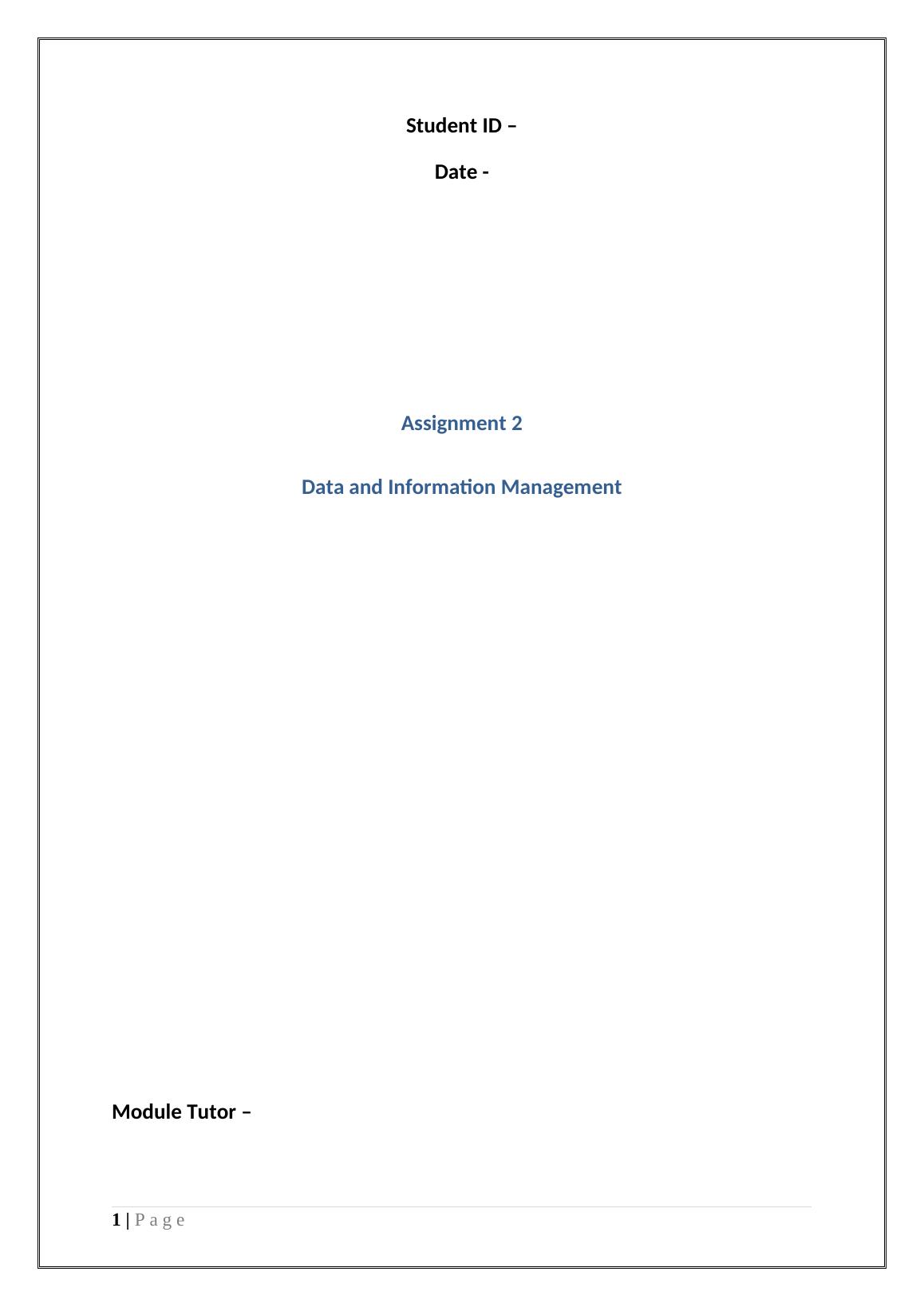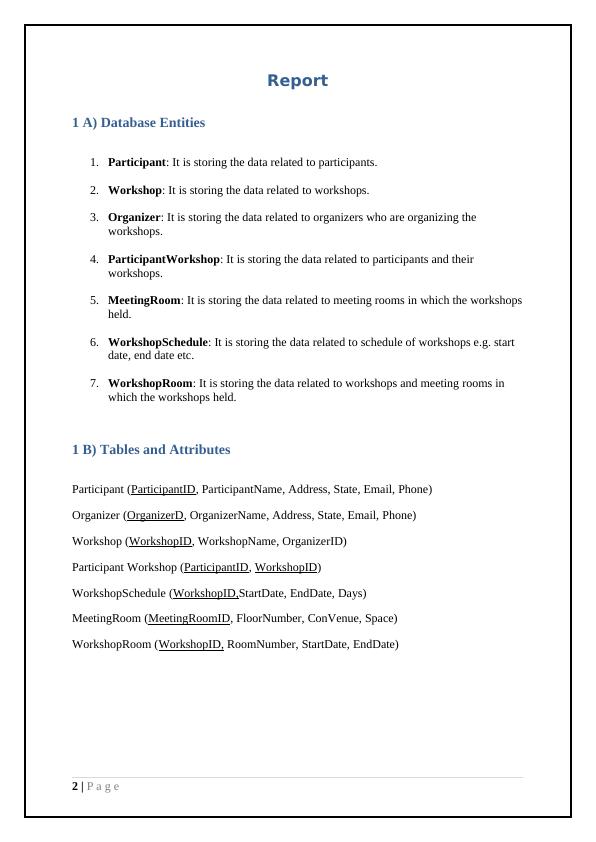Data and Information Management- Doc
8 Pages664 Words21 Views
Added on 2021-06-16
Data and Information Management- Doc
Added on 2021-06-16
ShareRelated Documents
End of preview
Want to access all the pages? Upload your documents or become a member.
Student ID –. Date -. Assignment 2. Data and Informatio
|8
|648
|1
Data and Information Management Assignment 2 Report
|7
|627
|482
Database Design of Employee Database for ACCT6001 Accounting Information Systems
|6
|731
|73
Data and Information Management Assignment-3
|14
|1577
|41
Data and Information Management Report 2018
|8
|596
|269
ICT701 Relational Database Systems
|9
|851
|121



